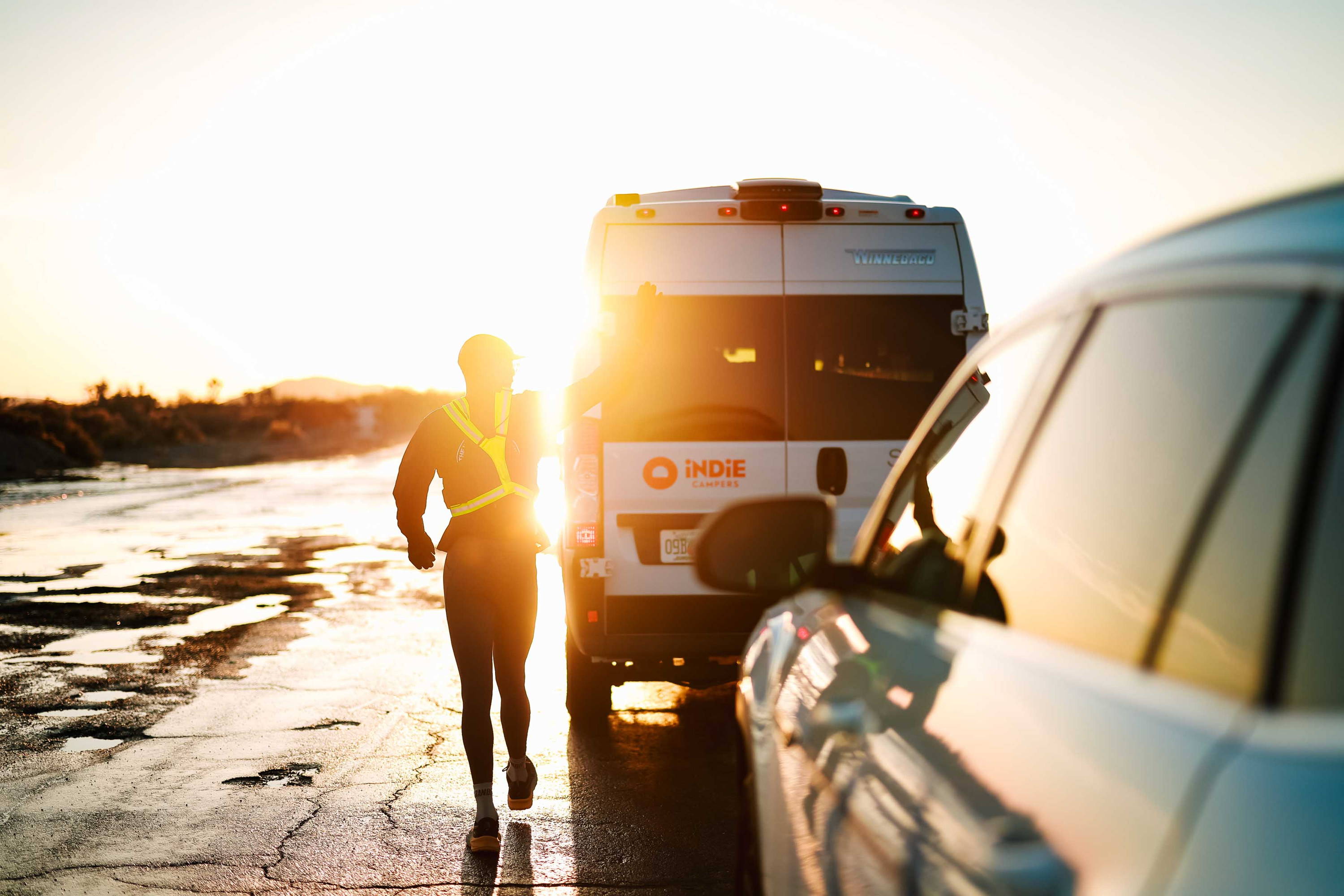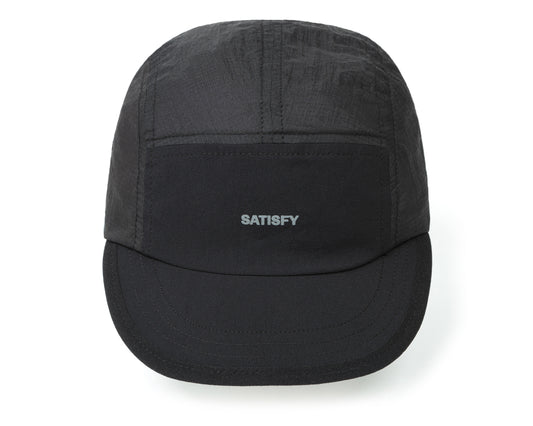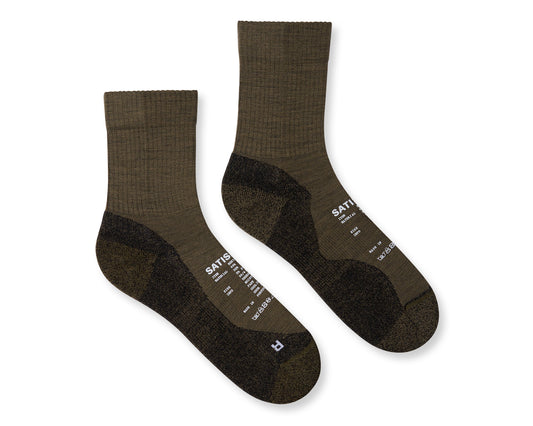
Because this is POSSESSED’s Outlaw Issue, we figured now would be a good time to check in with Nils Arend, co-founder of arguably the world's most notorious unsanctioned (outlaw) running race: The Speed Project. Since 2013, The Speed Project has offered runners from all over the world an opportunity to challenge themselves both physically and mentally in a mad dash from Santa Monica Pier in Los Angeles to the Welcome to Las Vegas sign in Las Vegas. It’s a race as rewarding as it is grueling and as grueling as it is difficult to find an entry portal.
A few days out from the event’s top-secret start date, we gave Nils a call to see how TSP 2024 was shaping up.

We met with you a few years ago, so let’s quickly race through your background story again for anyone who doesn’t know. You grew up in Germany, moved around with the family a lot, and started organizing raves, which led to a career in advertising. Then, you moved to LA and started your own ad agency?
Yeah, but I would say I was born in Germany, moved to Paris when I was four, lived in Africa, Turkey... I was all over the place. Part of my childhood was in Germany, but the rest was quite wild and worldly.
Why did you move around so much?
My parents... Well, my dad, in particular, is off his rocker. He’s 70-something and he just lived the last two years in a Defender; he was in Siberia ‘n shit. He could’ve gone somewhere warm and nice, but he likes being in harsh environments.
Oh, wow.
He just settled down in Portugal, but he did live in his car for two years by choice in his seventies.
And you’ve got a bit of a nomadic streak in you, too, right? Didn’t you intentionally not have a home a while back?
I’m still doing it. Since 2019, I’ve been fully nomadic without a home base.
Where are you now?
I’m in Los Angeles because we’re hosting our race right now. So, I’m here for a month, and then I will go to Europe next month, all over Europe. Then, I will go to Costa Rica and recharge.
Where do you stay on this nomadic quest?
I stay in a mix of friend’s houses, Airbnb’s, stuff like that. It’s a mixture of accommodations, I guess. But for what we do—what Speed Project needs—we’re building experiences through micro-communities in different parts of the world, and I need to spend time there. I spend time with people in those communities, and I have certain places like Costa Rica where I go to recharge, which is a pretty radical shift, like, being in LA and being in a car non-stop, to being barefoot and pretty isolated in Costa Rica.
It sounds lovely. So, the Speed Project is happening now... When does it start?
Well, we have different ways of running Speed Project. So, we have the solo way, and that starts on Monday the 25th of March, and then the relay race starts on Friday the 29th.
For the people who don’t know—including me—how does it work? As I understand it, there are no rules; you just have to get from Santa Monica Pier to Las Vegas on foot as fast as possible?
Yeah, well, basically... Well, there are two things that help explain the ethos of The Speed Project. One: There are no rules, and that comes from teenage Nils, you know, playing in a punk rock band, very anti-establishment, thinking anarchy is the solution.
[Laughter]

'...we could go to a coffee shop, roll up in an RV, pull twenty random people out of this coffee shop, and make them run from LA to Vegas. And they’re gonna make it.'
Right, okay.
So, there is the birth of ‘no rules’ out of that era, but fast-forward to now, and the way we see this, really, is that we remove the barrier of entry with no rules. So, the thought behind this is we could go to a coffee shop, roll up in an RV, pull twenty random people out of this coffee shop, and make them run from LA to Vegas. And they’re gonna make it. It might be the hardest thing they ever did, but the twenty strangers we pulled out of the coffee shop are going to be able to move on foot from LA to Vegas
Wait... Random people from coffee shops?
No, no, I’m just using that as an example. If we rolled up on a coffee shop, the first twenty people that walk in the door—we put them in an RV, and technically, they’ll be able to travel on foot from LA to Vegas.
Okay.
And it will be the hardest thing they ever did, and challenging on many different levels, but they can do it. And on the flip side, you have ultra-runners like James Poole, who is a very experienced long-distance athlete, and he decides to come to Speed Project and does it unsupported, with his own backpack, sleeping in a ditch at the side of the road. So, the twenty coffee shop strangers and James Poole equally get something out of this. We’re offering an experience that is inclusive of all levels of physical ability. And if you look at other crazy-hyped races, a lot of them only cater to the uber-athlete—
Right, right.
—and I don’t know about your running ability, but for me, I might not be able to participate in a lot of these races because it’s not reachable for me physically. So, with this idea of ‘no rules’ we’re removing a barrier. And we’re also removing the guardrails.
How?
Our community comes in and makes it their own. We initiate this experience, and then our community takes over. We just step away and let it happen. And that’s an element that challenges even me, you know? We don’t know what’s going to happen because we’re not in control. We allow our community to be the driving factor within this all. So, it keeps us and everyone on our toes, and I think that’s why we have a shit-ton of people coming back every year, because there is so much room to express yourself and approach this in different ways and make it your own.
Which is not how races traditionally work.
No, not at all. When I entered my first proper race, I was so disappointed because I’d put running on such a high pedestal, because it gave me so much when I moved to Los Angeles [in 2013]. Being in a different country, barely speaking the language, and not having any money, running created a safe place for me and added so much value to my life. Then, when I went to an actual race, I was so disappointed because I felt absolutely not understood, and everything was so regimented, and you couldn’t even move, really.
Right.
So, that was the rules aspect. The other aspect and ethos we speak a lot about is ‘no spectators.’
No spectators?
No spectators, which you could read as, ‘Oh yeah, they’re out in the desert and there’s nobody there to cheer them on,’ but it really stands for radical participation.

'So, I told my friends, "Hey, listen. I have this idea of running from LA to Las Vegas." And we were in my friend’s living room, and everyone was just hanging out, but no one acknowledged what I said.'
What do you mean by that?
When we did Speed Project the first time, my circle of friends were creatives, surfers, photographers, and musicians, none of them were runners, and when I first had the idea to run to Las Vegas, I was hanging out with these friends, and I’d had this idea for quite a while, you know? And I thought, ‘Well, maybe I’m going to share it today.’ So, I told my friends, ‘Hey, listen. I have this idea of running from LA to Las Vegas.’ And we were in my friend’s living room, and everyone was just hanging out, but no one acknowledged what I said.
[Laughter]
Someone said, ‘Can you grab me a beer out of the fridge?’ And I was like, ‘Okay. Got it.’
[Laughter]
So, then you met Blue Benadum [TSP co-founder].
Exactly. And then I met Blue and shared the idea with him—and he was such an athlete and full-on marathoner, and all those things—and he said, ‘Oh, yeah, we can do that, but only if we do it as fast as possible.’
[Laughter]
I mean, duh.
I know, right? So, anyway, we decided we were gonna do this, so I went back to my friends, and I was like, ‘Hey, you might not remember me mentioning it in the past, but I’m now gonna do it.’ And that’s when it clicked, and everybody was like, ‘Oh, have you figured which route you’re taking?’ And I was like, ‘No.’ And they’re like, ‘Can we help you with that?’ And I’m like, ‘Sure.’ And then someone was like, ‘Do you have anyone photographing this thing? Should I do it?’ And I’m like, ‘Yeah, cool.’
[Laughter]
So, they’re in now.
Yeah, everyone joined in, and all of a sudden, we had this mission together. And they had nothing to do with running, right? It’s like their first touchpoint with the sport, but they were able to contribute. And we were like, ‘Okay, we’re going on a fucking adventure together,’ and it didn’t matter how you participated; everyone was equally important. So, then later, when we released the film, and it didn’t do what I thought it might do, and I was disappointed, blah, blah, blah, and I was out late with my friends, and the friend who drove the RV on that first outing for 40 hours at five mph, he puts his arm around me and he’s like, ‘Nils, you know what?’ And I was like, ‘What?’ And he goes, ‘The Speed Project was the coolest thing I’ve done in my life.’

'...then when you actually end up participating, and you train for it, and you travel from all around the world, and then you race through the desert, you get to Las Vegas, and we host this pool party in the cheesiest Vegas way possible.'
Ah, that’s awesome.
And he didn’t even run! Anyway, that evening, I got home, and I was thinking, you know, we’ve screened this film online, and all these run crews watched us do it, but it didn’t seem to do the trick—maybe they should come out and do it with us. And that’s when we invited everyone.
And that’s how The Speed Project started.
Yeah.
How many teams did you have that first year you opened it up?
I think we had six teams, and then the following year, we had, like, twelve teams, and the next year, we had twenty-six teams, so it just got bigger and bigger. And early on, we decided we were not going to have a website; we’re not going to make it clear how to participate. Because, in my mind, we wanted to reward the curious by making things not obvious. So, I think the start of Speed Project is the moment it crosses your mind, and you think, ‘How can I participate in this thing?’
Right, right.
You know? And that’s the start of the journey—it doesn’t start at the Sant Monica Pier. And then when you actually end up participating, and you train for it, and you travel from all around the world, and then you race through the desert, you get to Las Vegas, and we host this pool party in the cheesiest Vegas way possible. We thrive on those juxtapositions, on bringing things together that aren’t normally together.
So, now that you’re over ten years in and the race has gotten bigger and bigger, what’s the selection process for entries? There must be a cut-off, otherwise you’d have people blocking up the freeways between Vegas and LA.
So, we’re curating the field. And we curate the field in a way that everybody participating is fully aware of the risks involved and the experience they’re about to go through. I often compare it to a club and the door person who is in charge of creating the atmosphere inside the club. And in order to create a raging club environment, you have to have different types of humans in there with different qualities and abilities and so on. So, we’re similar in that we want a worldly field that brings different perspectives. From day one, we’ve always had a global field.
So, that’s one component. The other element is, hey, we’re not just a party celebrating the people for showing up—it’s a foot race, and performance is at the heart of it. So, we’re looking at that component, but not with everybody; there just needs to be a representation of that aspect within the field. So, we’re just ensuring there’s a raging party inside the club.
But how do you find the club? When I was researching Speed Project before this interview, I was struggling to even find out when it was, let alone how to enter.
So, that’s perfect!
[Laughter]

'There’s so much magic in Death Valley that goes beyond just the visual, and it’s energizing. But then that energy gets taken away when you remember how many hours you’ve got to go...'
Do you have to go through Death Valley? I looked at a map and saw that you’ve basically got Death Valley or the Mohave Desert. Is there a way to go between the two?
It’s interesting, I knew a way to cut out Death Valley, but I never really thought anyone would care that much to go in and figure out a shorter route. Until people actually did care, and they put a lot of effort into finding the shortest, fastest route possible. And now they’re figuring out strategy, like, how much does every runner run per leg, you know? Back in the day, we ran 10 km increments and broke that down to 5 km, and then later on, 1 or 2 kms. Now, the fast fast teams are running 90 second intervals, and it’s like a full-on operation on the performance side. So, on the one hand, it’s become really competitive in an amazing way because I never thought anyone would care enough.
Wait, though, how do you cut out Death Valley?
Powerline Road. It’s actually become iconic now. Everybody knows about Powerline Road. It’s like a thing to do, the OG route. So, we have the solo category, meaning the runners run by themselves the entire race, and this year there was a big shift from the shortest route possible to the solo runners making an agreement to go the OG route, 340 miles following the map. Like, we don’t direct this—
The runners make whatever calls they want.
Yeah, the community will be like, ‘Hey, what if we do this.’ We just present a blank canvas and let everybody fuck with it.
Is Death Valley the hardest part of the race? What’s the toughest bit?
The first night. We start at 4 am, and you have sunset between 6 and 7 pm. So, everyone muscles through that night. Since we start at 4 am, that means you had to get up at 2 am, so you probably didn’t really sleep the night before, meaning it’s almost two nights of no sleep by the second night of the race. So, the later hours of that night are when you have to keep the morale up and be positive because that’s when shit goes wrong. It’s gets really tough. But then you get a second wind with the sunrise, and if you’re one of the faster teams or runners, that’s the time you enter Death Valley, and that’s the most amazing moment you can imagine. There’s so much magic in Death Valley that goes beyond just the visual, and it’s energizing. But then that energy gets taken away when you remember how many hours you’ve got to go, and then it heats up and it becomes brutal.
[Laughter]
But you’re on the home stretch and you’ve gotta muscle through.
And then you go to the pool party.
Yeah, everyone who actually makes it.
[Laughter]

'It’s about centering ourselves and loving the moment we’re in, and appreciating what we’re able to touch and influence and do right now. Because that’s where we are: we’re here now.'
Last question: What’s the future of Speed Project?
I guess we’ll see. We’re just this small, agile team that’s creating moments, fuelling each other and our community, and we want to continue doing that. We don’t have a specific game plan or anything, we’re happy where we are. Actually, we launched a statement at our ten-year anniversary last year: It Was Better Next Year. It’s a sort of play with words that makes you be present in the moment, in the now, instead of thinking or saying, ‘Oh, it was so much better in the past,’ or even wishing you were in the future. It’s about centering ourselves and loving the moment we’re in, and appreciating what we’re able to touch and influence and do right now. Because that’s where we are: we’re here now. People ask me, ‘Where do you live,’ and always say, ‘Right here, right now.’
That’s home.
Yes, it is.

















